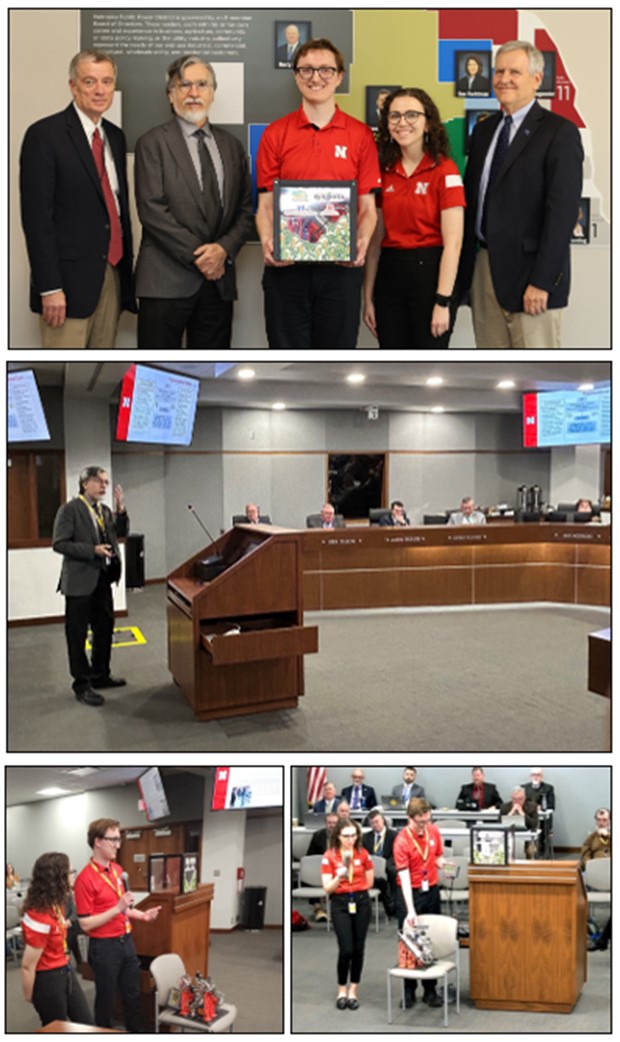
NPPD Director of Generation Strategies and Research John H. Swanson discussed Strategic Directive BP SD-11, Research and Development. Mr. Swanson discussed three main areas that support BP SD 11, including the partnership with UNL and the Nebraska Center for Energy Sciences Research (NCESR); membership in and collaboration with the Electric Power Research Institute (EPRI); and work with other universities, engineering firms, national laboratories, the Department of Energy, State of Nebraska agencies and industry groups. Mr. Swanson also reviewed current and ongoing projects in support of the intent of BP-SD-11.
NPPD Associate Director of Research Alan L. Dostal discussed the economic and other benefits brought to NPPD’s customers as a result of the partnership between NPPD and the University of Nebraska-Lincoln which created the Nebraska Center for Energy Sciences Research (NCESR) in 2006. The Center was established to fund research in the area of energy and to solve energy-related challenges while bringing benefits to our customers and to the state. Mr. Dostal discussed achievements and shared success stories for projects that were developed and funded under the NCESR, providing practical solutions to everyday energy challenges faced by Nebraskans.
UNL Director of the Nebraska Center for Energy Sciences Research, Dr. George Gogos, provided the annual NCESR update to the NPPD Board. Following a review of the Center’s structure, mission and principles, Dr. Gogos discussed Cycle 19 (2025-26) proposals and the timeline for Cycle 20 (2026-27). Also discussed were the historical impacts of the Center, including return on investment for NPPD’s annual funding, the number of students involved and impacted over the years, and the number of research projects funded and ensuing scientific publications.
To close the presentation, UNL students Katie Kersten and Sam Freeze demonstrated a prototype they conceived, built, and entered into an American Institute of Chemical Engineers student conference ChemE Cube competition in October 2024. The Energy Center provided financial support for their project, which culminated in a one-cubic-foot box equipped to capture carbon dioxide. The CO2 was captured onto activated carbon made from corn stover and other agricultural byproducts from Nebraska.